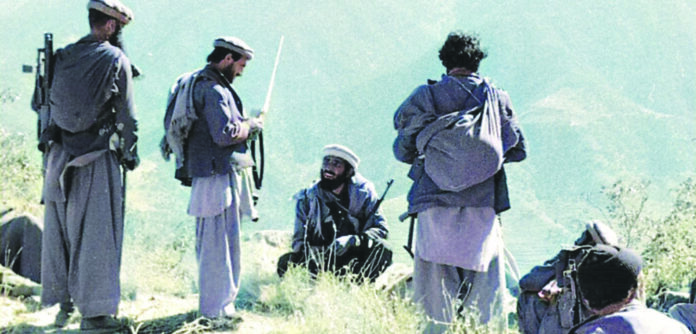After 9/11, the so-called War on Terror turned the Pashtun belt into a war-torn and conflict-ridden region. Far from eliminating terrorism, it attracted jihadists from the Arab world and Central Asia to Pashtun lands. In this war, which was waged against terrorism, approximately 3,500 NATO forces, including Americans, lost their lives. On the other hand, Afghanistan lost over 66,000 military personnel, and more than 6,000 Pakistani security forces also perished. However, the Pashtun people of Pakistan suffered the heaviest losses, with around 76,000 casualties. These numbers indicate the massive human toll the Pashtun nation has endured.
The Pashtun region has long been a theatre for international conflict, making it difficult for outsiders to fully comprehend the agony endured by its people. In this international war, Pashtuns have not only suffered casualties, but according to data presented at the Jirga, the number of missing persons has reached 6,700. Additionally, 5.7 million individuals are now internally displaced persons (IDPs), with approximately 201,707 Pashtun identity cards blocked.
The report from the Pashtun National Jirga reveals the grim reality of war and terrorism in the Pashtun Belt. More than 75,000 Pashtuns, including children, women, and 1,738 tribal elders, have lost their lives, delivering a severe blow to the social fabric of the community.
The enforced disappearance of over 6,700 individuals marks a new level of human rights violations, with affected families expressing despair and a desperate longing for accountability. These families are moving toward a bleak future with little hope for justice.
Approximately 370,000 homes, mosques, and markets have been completely destroyed, including 150,000 homes in South Waziristan alone. The economy has been severely impacted, with the destruction of 35 major markets leading to the loss of 25,000 shops, exacerbating the hardships faced by local communities. Currently, 5.7 million individuals have been rendered homeless, with 2.3 million still displaced, indicating a significant humanitarian crisis in the region. Furthermore, while illegal land grabs have deprived locals of their fertile lands, undermining the very foundation of social structure.
The ongoing war economy in Khyber Pakhtunkhwa is intertwined with the interests of various stakeholders amid prolonged conflicts, terrorism, and military operations. A stark example of this is Kurram District, where state presence is virtually nonexistent, and up to 50 young men are lost monthly. The sectarian conflict there is perhaps more significant than two states at war, with heavy weaponry and artillery being used against the population without any rules of engagement. This chaotic environment has been orchestrated to destabilize the Pashtun Belt and facilitate the plunder of its resources.
Warlords have painted our Pashtun society as terrorists and savages, transforming the entire community into an extremist society. The portrayal of Pashtuns in the media and the construction of their identity have inflicted deep wounds on the Pashtun nation. To address these pressing issues, the Pashtun Tahafuz Movement convened a Jirga that included leaders and representatives from all walks of life. Over three days, serious discussions were held to address the challenges and resources in Khyber Pakhtunkhwa, culminating in a resolution on October 13, which I wish to briefly analyze.
Eviction of Military and Terrorist Organizations: The Jirga granted a two-month ultimatum for military and terrorist organizations to leave the region. The Pashtun nationalist majority views the military and the Taliban as two sides of the same coin— militarization breeds terrorism and vice versa. The Pashtuns have now realized they are merely fuel for international conflicts, leading to a severe loss of trust in security institutions, especially the military.
Rights to Resources: The demand for rightful access to resources in Khyber Pakhtunkhwa is legitimate under Articles 172 and 158 of the Pakistani Constitution, which prioritize the rights of provinces over their natural resources. Thus, this decision is fully compliant with Pakistani law. The demand to set electricity prices at Rs 5 per unit and provide free electricity to tribal areas is grounded in economic rights within constitutional boundaries.
Opening of the Durand Line: The Jirga resolved to open the Durand Line, which could reduce border tensions between Pakistan and Afghanistan and provide economic benefits for the entire region. An interdependent economic relationship would likely improve security conditions along the border, as open borders enhance trade, benefiting the economies of both countries.
In conclusion, the Pashtun Jirga’s resolutions reflect a collective demand for justice, accountability, and an end to the suffering inflicted by decades of conflict and instability. The Pashtun community is determined to reclaim their rights and secure a peaceful future for themselves and the generations to come.





















